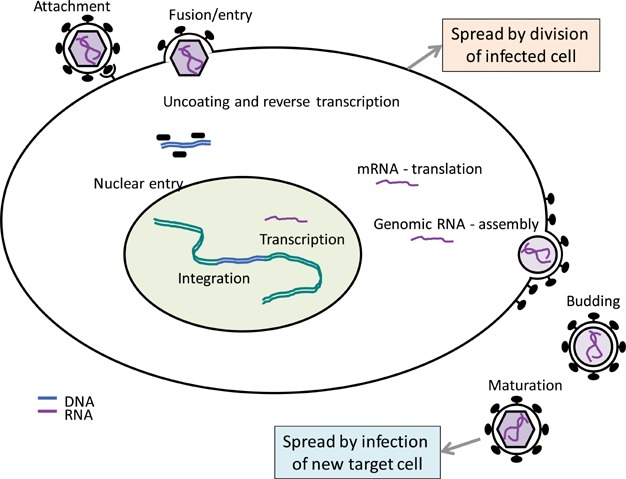Figure 1.

Typified retroviral life cycle. Retroviral infection begins with virion attachment usually to a cellular receptor, followed by fusion of virion and plasma membranes. In the cytosol, the two copies of genomic RNA are reverse-transcribed and following capsid disassembly they form the pre-integration complex, which then enters the nucleus. The reverse-transcribed cDNA copy is then integrated into the host cell DNA and from that point this provirus behaves analogously to a cellular gene, in that cellular division of an infected cell will create two infected daughter cells. Expression of mRNA from the provirus provides both new genomic RNAs as well as synthesis of viral proteins, which are all then assembled into new virions. These are then released from the plasma membrane and undergo maturation before they infect the next cell.
